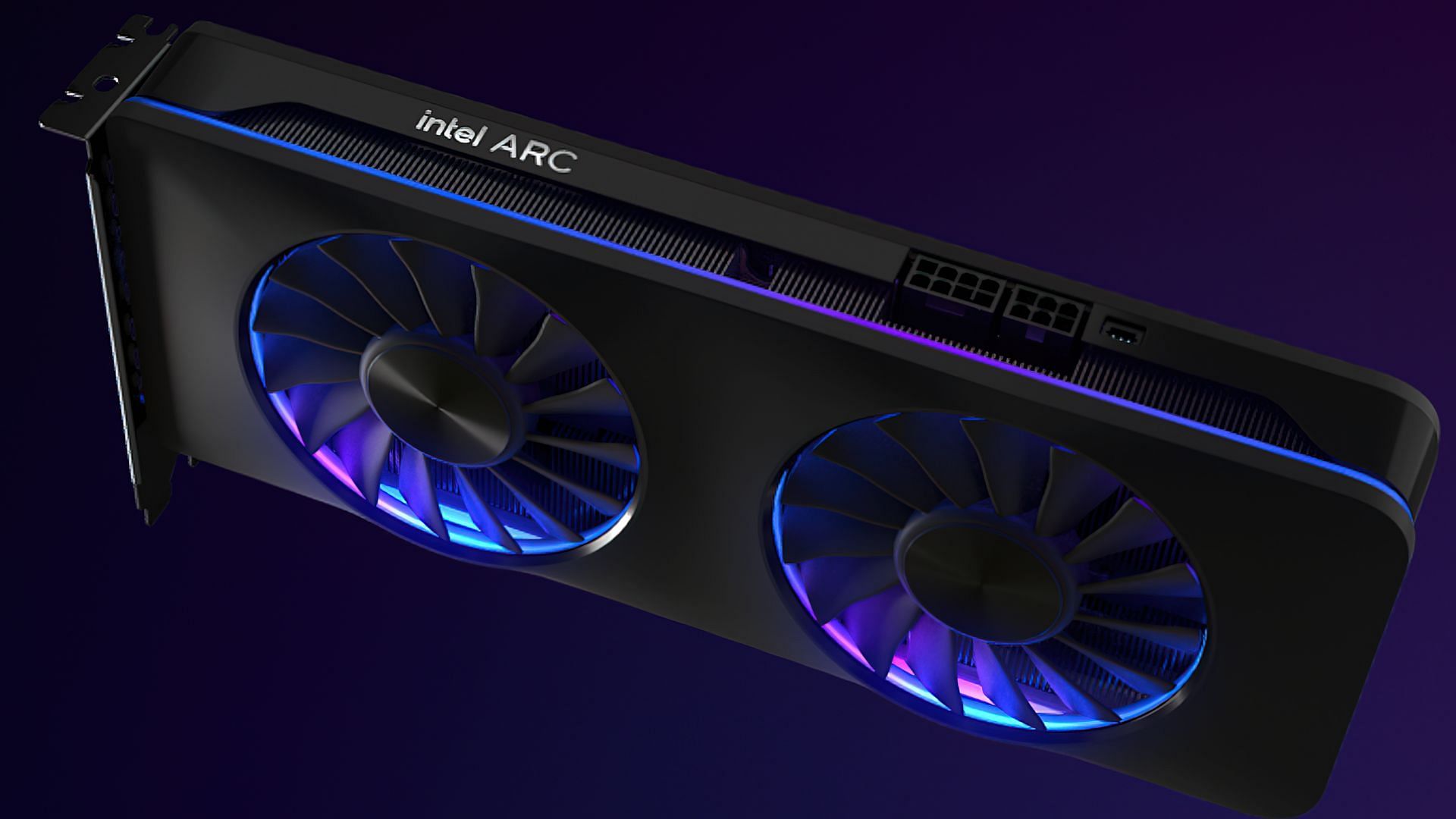Intel is a company that continuously works towards improving its technological elements and products to enhance overall customer satisfaction.
The new Intel Arc GPU release features advanced technologies such as real-time ray tracing for realistic lighting and shadows, AI-enhanced graphics through XeSS (Xe Super Sampling), and high-bandwidth memory to handle demanding tasks.
They also offer versatile connectivity options, including DisplayPort 2.0 and HDMI 2.1, to ensure compatibility with the latest displays and high-resolution setups.
In this article, let’s discuss the role of display port 2.0 in new Arc GPUs.
What is DisplayPort 2.0?
The most recent version of the DisplayPort standard, DisplayPort 2.0, offers several improvements over DisplayPort 1.4. DisplayPort 2.0 was officially introduced in June 2019 to meet the increasing needs of contemporary displays for greater resolutions, refresh rates, and color depth. It offers notable performance and bandwidth gains, which are essential for high-end gaming and business applications.
Key features of DisplayPort 2.0:
Increased Bandwidth: A maximum bandwidth of 8.1 Gbps per lane, or 32.4 Gbps over four lanes, is available with DisplayPort 2.0. This is a significant boost over DisplayPort 1.4’s 25.92 Gbps speed. With this increased bandwidth, smoother and more detailed images are guaranteed at resolutions up to 8K at 60 Hz or 4K at 240 Hz.
Enhanced Resolution and Refresh Rates: DisplayPort 2.0 can allow higher resolutions and refresh rates, up to and including 8K monitors, thanks to its enhanced bandwidth. For professionals and enthusiasts who need fast frame rates and ultra-high-definition graphics, this feature is very crucial.
Improved Color Depth and HDR: DisplayPort 2.0 supports up to 12-bit color depth and high dynamic range (HDR) content. This means richer colors and greater contrast, enhancing the overall visual experience.
Multi-Stream Transport (MST) Hub Support: DisplayPort 2.0 maintains support for MST hubs, allowing multiple displays to be connected through a single port. This feature is beneficial for multi-monitor setups and complex professional workstations.
Backward Compatibility: DisplayPort 2.0 ensures compatibility with current displays and devices, even though it offers more functionality and is backward compatible with previous DisplayPort versions.
The Intel Arc GPU
Intel’s Arc GPUs represent a new era in graphics technology for the company, marking its entry into the discrete graphics market. Designed to compete with established players like NVIDIA and AMD, the Intel Arc GPUs aim to provide high performance for gaming, content creation, and professional applications.
Key Features of Intel Arc GPUs:
Xe-HPG Architecture: The Arc GPUs are built on Intel’s Xe-HPG (High-Performance Gaming) architecture, which emphasizes high performance and efficiency. This architecture includes dedicated hardware for ray tracing, AI-enhanced graphics, and variable-rate shading.
Ray Tracing Support: These GPUs support real-time ray tracing, a technology that enhances lighting, shadows, and reflections for more realistic visuals. This capability is essential for modern gaming and professional graphics work.
AI-Enhanced Features: These GPUs utilize Intel’s XeSS (Xe Super Sampling) technology, which uses artificial intelligence to upscale lower-resolution images, improving performance without sacrificing visual quality.
High-Bandwidth Memory: The Arc GPUs are equipped with high-bandwidth memory (HBM) to handle the demanding requirements of high-resolution textures and complex computations.
Versatile Connectivity: The Arc GPUs are compatible with both high-performance systems and the newest monitors with a variety of connectivity choices, such as DisplayPort 2.0 and HDMI 2.1.
The Integration of DisplayPort 2.0 in Intel Arc GPUs
The integration of DisplayPort 2.0 into Arc GPUs plays a pivotal role in unlocking the full potential of these graphics cards. Here’s how DisplayPort 2.0 enhances the Intel Arc GPU experience:
Maximizing Resolution and Refresh Rates
Displays with better resolutions and refresh rates can be driven by the Arc GPUs because of DisplayPort 2.0’s enhanced bandwidth. This means having the option to play in 8K resolution or 4K at 240 Hz, which offers incredibly fluid gameplay and breathtaking graphics for players.
Professionals can utilize it to perform detailed tasks like data analysis, 3D rendering, and video editing by using high-resolution displays.
Supporting Advanced Display Technologies
The Arc GPUs fully leverage DisplayPort 2.0’s capability for rich color depth and HDR. This makes for a more immersive visual experience with richer colors and better contrast for video makers who need precise color reproduction and a wide dynamic range.
Future-Proofing Graphics Performance
The wider adoption of DisplayPort 2.0 means that the Arc GPUs can be well-positioned to benefit from future developments in displays. Higher bandwidth and compatibility with newer technologies guarantee that Intel graphics cards are still relevant and able to handle advancements in display technology.
Enhanced Multi-Monitor Setups
DisplayPort 2.0’s MST hub functionality makes managing numerous displays easier and more effective for users with multi-monitor setups.
Professionals who work with large screens will find this very helpful, as will gamers who want to play games on many monitors for a more immersive experience.
Optimizing Content Creation Workflows
DisplayPort 2.0 offers enhanced bandwidth and color depth, which is beneficial for content creators who deal with sophisticated 3D models and high-resolution video.
High-resolution displays with accurate color representation can be used to power more accurate and productive workflows in fields including graphic design, virtual reality development, and video editing.
Real-World Applications and Benefits
The practical benefits of DisplayPort 2.0 in Intel Arc GPUs extend beyond theoretical improvements, impacting real-world applications in various ways:
Gaming
Gamers can experience unprecedented visual fidelity with Intel Arc GPUs and DisplayPort 2.0. The capability to support 8K gaming or 4K at high refresh rates ensures that even the most demanding games run smoothly and look spectacular.
Features like ray tracing and AI-enhanced graphics are more effectively showcased with the high bandwidth and color depth provided by DisplayPort 2.0.
Professional Workstations
For professionals working in fields such as video production, 3D modeling, and scientific visualization, the advanced capabilities of DisplayPort 2.0 enable more efficient and accurate work. High-resolution monitors and precise color reproduction are essential for tasks that require detailed visual analysis.
Conclusion
An important development in graphics technology, DisplayPort 2.0 integration in Intel Arc GPUs offers better visual quality, increased resolution capability, and increased speed. With DisplayPort 2.0’s increased bandwidth and sophisticated functionality, the Arc GPUs are positioned to provide amazing experiences for professionals, content makers, and gamers alike.
Read More: What Makes Intel Arc GPUs Different from Other GPUs?



